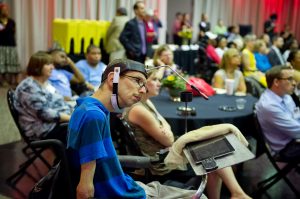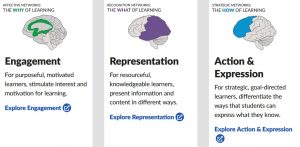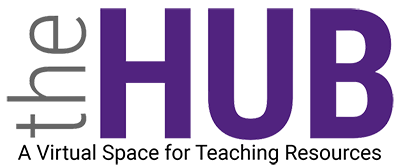
What is Accessibility?
Accessibility is the practice of designing educational experiences and adopting pedagogical strategies to meet the needs of students of all backgrounds and learning preferences. Through functional accessibility, students are able to acquire the same information, engage in the same interactions, and enjoy the same services. Montgomery College is committed to providing equal access and opportunities to persons with disabilities, including education, employment, programs, services, and activities.
Visit the Accessibility website to find information to guide students, employees, and visitors towards support services, information, and resources. As employees of Montgomery College, we all play a role in removing barriers to education.
Accommodations and services are facilitated by multiple departments and units across the campuses. For information about Accommodations related to a disability, refer to the Disability Support Services website.
What is Universal Design for Learning (UDL)?
Universal Design for Learning (UDL) is a framework developed by CAST. UDL guides the design of learning experiences to meet the needs of all learners proactively. When you use UDL, you assume that barriers to learning are in the design of the environment, not in the student. UDL is based on brain science and evidence-based educational practices. It also leverages the power of digital technology (Posey, 2021).
Video: What is Universal Design for Learning or UDL?
Why is UDL important?
Creating universally accessible and engaging learning environments requires both good design and timely accommodation. By applying UDL principles to your resource selection and design practice, you reduce the need for ad hoc accommodations. Creating learning environments that eliminate barriers and maximize inclusion are core principles that inform both theory and practice at Montgomery College.
What does this look like in practice?
The UDL Guidelines address the why, what, and how of learning (see image below).

The suggestions below offer tips to design meaningful lessons with UDL principles in mind:
- Multiple Means of Engagement (Connect to the Why of Learning)
- Multiple Means of Representation (Clarify the What of Learning)
- Multiple Means of Action & Expression (Facilitate the How of Learning)
ELITE offers individual workshops and a series on the principles of UDL.
Additional Resources
- CAST: About Universal Design for Learning
http://www.cast.org/our-work/about-udl.html - TCC Library’s Faculty Guide to Open Educational Resources (OER)
https://tacomacc.libguides.com/oer - WAVE (Web Accessibility Evaluation Tool)
https://wave.webaim.org/ - BC Campus Open Ed’s Accessibility Checklist for Textbooks
https://opentextbc.ca/accessibilitytoolkit - Achieve’s Rubrics for Evaluating OER Objects
http://www.achieve.org/files/AchieveOERRubrics.pdf - UDL on Campus
udloncampus.cast.org/
Credit
Adapted from Jennifer Snoek-Brown and Dale Coleman, Tacoma Community College. Retrieved from https://www.oercommons.org/authoring/55063-open-for-everyone-integrating-universal-design-for/view
References
CAST (2018). Universal Design for Learning Guidelines version 2.2. Retrieved from http://udlguidelines.cast.org
Posey, A. (2021). Universal Design for Learning (UDL): A teacher’s guide. Understood: https://www.understood.org/articles/en/understanding-universal-design-for-learning?utm_source=google-search-nongrant&utm_medium=paid&utm_campaign=evrgrn-may20-edu&gclid=CjwKCAjw3MSHBhB3EiwAxcaEuxzjcCR1wfR_0VnGX1f2W8tpmU8Buwy-0HRDmo9Ol2VDHY7idJmGyhoCi3MQAvD_BwE
The Universal Design Center is designed to support the College community by removing barriers in our working and learning environments, using accessible information, communication technology, inclusive physical environments, promoting inclusion, social justice, and cultural competence.
Visit the Universal Design Center to learn more.
